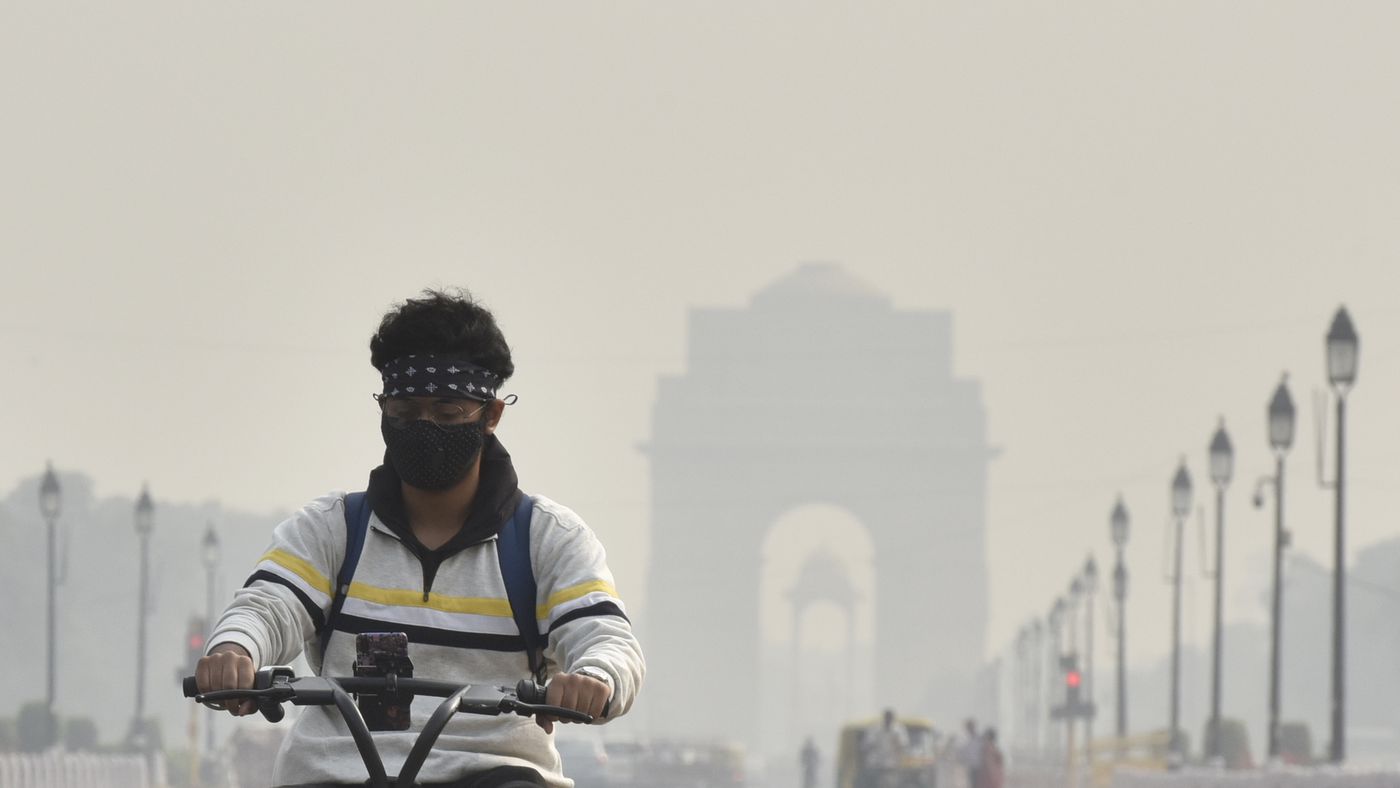
With Delhi's air quality slipping from the "very poor" to "severe" category, plying of BS-III petrol and BS-IV diesel vehicles has been banned once again in the capital. While this ban has created problems for lakhs of motorists, on the one hand, it has also put a question mark on the government's measures to prevent air pollution.
Shocking research report of Safar India
Experts also say that the polluting factors are increasing continuously while temporary restrictions are imposed instead of adopting permanent measures. The research report of SAFAR India, under the Union Ministry of Earth Sciences, prepared on the increasing scope of pollution during the decade from 2010 to 2020, puts forth a shocking picture in this regard.
According to this report, while the share of traditional sources of pollution has changed significantly during this period, 26 new sources have also been added. In such a situation, these factors also cannot be ignored for effective prevention of pollution.
What is the share (in percentage) of which sector other than transport in Delhi's PM 2.5 source share 1? Industry 22.32. Energy 3.13. Residential 5.74. Construction site 18.15. Other sources 11.7 (solid waste, open burning, brick kilns, etc.). Along with this, there has been a change in the traditional sources of pollution during the decade.
New sources of pollution in Delhi and their causes
1. Transport: Encroachment on roads and hour-long traffic jams
2. Slum: Fuel used for cooking and its quantity
3. Brick Kilns: Technology of Operation and Quantity of Fuel Used
4. Street vendors: Polluted fuel, coal for oven
5. Hotel (Dhaba): Type and quantity of fuel used for cooking
6. Speed Breakers: No. of Speed Breakers per Km of Road Type
7. Major Hospitals: Number of outpatients, vehicle load, and DG sets
8. Tourist Places: Tourist Load - Vehicle Load
9. Shopping Mall: Number of Vehicles Parked
10. Traffic Junctions: Number of Traffic Junctions
11. Railway station: passenger load, vehicle load
12. Airport: Vehicle Number (Local and Outstation)
13. Industries: Category, Technology, and Fuels Used
14. Local Transport (Ola/Uber/Taxi): Number of km traveled per day and
15. Domestic: Type of fuel used
16. Waste burning: Quantity per person
17. Biomedical Waste: Quantity generated
18. Power Plant: Technology Used, Coal Used
19. Crematoriums: Location, Number of cases
20. Big Hotels: Fuel used for cooking
21. Big School/College: Student Number, Vehicle Number
22. Wind: Dust blowing on the road, road condition, vehicle load, etc.
23. Diesel generator: Fuel usage, for how many hours
24. MOBILE TOWERS: FUEL USED AND NUMBER
25. Regular Milk and Vegetable Van: No. of Vehicles (External)
What do experts do?
Apart from this, the type of fuel, the number of vehicles, the crowd of people, the method of cooking, etc., all contribute to making any place a pollution hot spot, said Dr. Gurfan Baig, Project Director, Safar India. If somewhere coal, kerosene, or wood is burnt, if the speed of the vehicle is increased by slowing it down, somewhere there is a lot of vehicle traffic, then undoubtedly all this pollution increases. None of these factors can be ignored.
Auto expert Tutu Dhawan told that the ban on BS 3 and BS 4 vehicles is directly the failure of the governments. Pollution is not caused by the running of these vehicles but by their repeatedly getting stuck in jams and running at a slow speed. But due to the greed of the vote bank, the government is neither able to solve the traffic jam problem nor remove the encroachment. If the red beacon is abolished like in the British era or Bhutan, then this pollution caused by vehicles will not remain. It has also come in a report of IIT Kanpur that the pollution of vehicles is only 9 to 10 percent, while the rest is due to other reasons.
Professor, Department of Civil Engineering, IIT Kanpur. SN Tripathi said that to solve the problem of jams, the Delhi government should also make serious efforts towards improving the faulty design of roads, eliminating bottlenecks, and removing encroachments around the roads, which are usually not visible. Apart from this, there is a need to work seriously on other factors related to spreading pollution. Whenever the public is troubled by adopting immediate measures, the government seems to be running away from its responsibility.
Also Read: NGT: Joint panel of NGT will prepare a report on air pollution from thermal plant
After the immense popularity of the first season in 2022, the second season of the popular series
Kolkata Knight Riders will clash with Delhi Capitals in the 47th match of IPL 2024. In the f
Shahbaz Sharif has admitted for the first time that it is a matter of shame for him to extend a h
Indian cricketer Yuzvendra Chahal celebrated his 35th birthday on Wednesday. On this occasion, he
Weather Update Today: The Meteorological Department on Monday said that heavy rains are likely to
Bollywood actress Sonakshi Sinha and Zaheer Iqbal are making headlines these days for their marri
Grand welcome for PM Modi in Sri Lanka, 5 ministers welcomed him with guard of honor
Prime Minister Narendra Modi has arrived in Sri Lanka on a three-day visit after his visit to Tha
Former Indian cricketer and commentator Sanjay Manjrekar has praised the Indian batting in Manche
Auto Taxi Strike: If you have to go for some important work in NCR today Thursday and tomorrow Fr
Corona has once again increased the concern of the country. Every day the figures of the infected